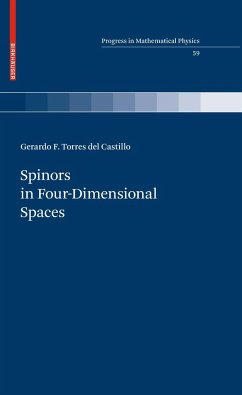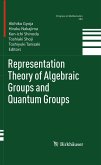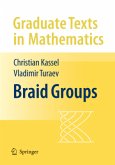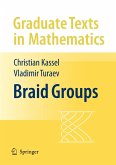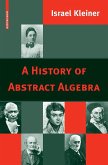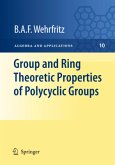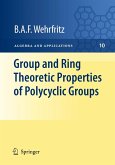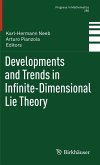Without using the customary Clifford algebras frequently studied in connection with the representations of orthogonal groups, this book gives an elementary introduction to the two-component spinor formalism for four-dimensional spaces with any signature. Some of the useful applications of four-dimensional spinors, such as Yang Mills theory, are derived in detail using illustrative examples.
Key topics and features:
Uniform treatment of the spinor formalism for four-dimensional spaces of any signature, not only the usual signature (+ + + ) employed in relativity
Examples taken from Riemannian geometry and special or general relativity are
discussed in detail, emphasizing the usefulness of the two-component spinor formalism
Exercises in each chapter
The relationship of Clifford algebras and Dirac four-component spinors is established
Applications of the two-component formalism, focusing mainly on general relativity, are
presented in the context of actual computations
Spinors in Four-Dimensional Spaces is aimed at graduate students and researchers in mathematical and theoretical physics interested in the applications of the two-component spinor formalism in any four-dimensional vector space or Riemannian manifold with a definite or indefinite metric tensor. This systematic and self-contained book is suitable as a seminar text, a reference book, and a self-study guide.
Reviews from the author's previous book, 3-D Spinors, Spin-Weighted Functions and their Applications:
In summary the book gathers much of what can be done with 3-D spinors in an easy-to-read, self-contained form designed for applications that will supplement many available spinor treatments. The book should be appealing to graduate students and researchers in relativity and mathematical physics.
Mathematical Reviews
The present book provides an easy-to-read and unconventional presentation of the spinor formalism for three-dimensional spaces with a definite or indefinite metric...Following a nice and descriptive introduction the final chapter contains some applications of the formalism to general relativity.
Monatshefte für Mathematik
Key topics and features:
Uniform treatment of the spinor formalism for four-dimensional spaces of any signature, not only the usual signature (+ + + ) employed in relativity
Examples taken from Riemannian geometry and special or general relativity are
discussed in detail, emphasizing the usefulness of the two-component spinor formalism
Exercises in each chapter
The relationship of Clifford algebras and Dirac four-component spinors is established
Applications of the two-component formalism, focusing mainly on general relativity, are
presented in the context of actual computations
Spinors in Four-Dimensional Spaces is aimed at graduate students and researchers in mathematical and theoretical physics interested in the applications of the two-component spinor formalism in any four-dimensional vector space or Riemannian manifold with a definite or indefinite metric tensor. This systematic and self-contained book is suitable as a seminar text, a reference book, and a self-study guide.
Reviews from the author's previous book, 3-D Spinors, Spin-Weighted Functions and their Applications:
In summary the book gathers much of what can be done with 3-D spinors in an easy-to-read, self-contained form designed for applications that will supplement many available spinor treatments. The book should be appealing to graduate students and researchers in relativity and mathematical physics.
Mathematical Reviews
The present book provides an easy-to-read and unconventional presentation of the spinor formalism for three-dimensional spaces with a definite or indefinite metric...Following a nice and descriptive introduction the final chapter contains some applications of the formalism to general relativity.
Monatshefte für Mathematik
From the reviews:
"This is a very welcome addition to the bookshelves of those for whom it is mainly intended: graduate students and more experienced researchers using spinors in relativity or quantum field theory. It is a detailed and careful explanation, beginning with the important algebraic steps, and pushing carefully onward to the use of spinors to make powerful results in these fields of physics much easier to obtain. ... This is definitely a book I will be very happy to have on my shelves ... ." (J. D. Finley, III, Mathematical Reviews, Issue 2011 g)
"This book contains an elementary and essentially self-contained exposition of the two-component spinor formalism for a four-dimensional space-time having an arbitrary signature without appealing to the Clifford algebra methodology. ... Each chapter includes numerous examples, and exercises, which make it ideal for the use as a textbook, a reference, or for independent study. It is a notable and welcome addition to the existing literature." (Joseph D. Zund, Zentralblatt MATH, Vol. 1206, 2011)
"This is a very welcome addition to the bookshelves of those for whom it is mainly intended: graduate students and more experienced researchers using spinors in relativity or quantum field theory. It is a detailed and careful explanation, beginning with the important algebraic steps, and pushing carefully onward to the use of spinors to make powerful results in these fields of physics much easier to obtain. ... This is definitely a book I will be very happy to have on my shelves ... ." (J. D. Finley, III, Mathematical Reviews, Issue 2011 g)
"This book contains an elementary and essentially self-contained exposition of the two-component spinor formalism for a four-dimensional space-time having an arbitrary signature without appealing to the Clifford algebra methodology. ... Each chapter includes numerous examples, and exercises, which make it ideal for the use as a textbook, a reference, or for independent study. It is a notable and welcome addition to the existing literature." (Joseph D. Zund, Zentralblatt MATH, Vol. 1206, 2011)

